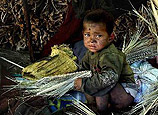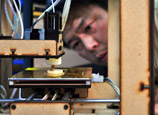
PROTECTION NEEDED
Unlike Zhao and Zhu, "Xin Xin" chose to reveal his sexual orientation to his peers and boss.
"The old days when I had to pretend to be a strong straight guy were so depressing and miserable. Now, I feel relieved and happy about my life," said the fashion magazine staffer in Beijing.
His bold move, unsurprisingly, brought trouble. "One of my peers, a straight man, fled the restroom as soon as he saw me enter it," he said, adding that he never filed grievances with the company's management.
"They don't understand gays. Some even still see homosexuality as an illness," he said.
The predicaments of homosexuals and bisexuals are the result of employers' failures to establish measures to protect LGBT staff and their lack of awareness about building a diverse work environment, according to the Aibai report.
"Currently, Chinese companies are almost unaware of the existence of sexual minority employees, let alone know about protection and equal rights for them," said Huang Yaohua, the program manager in charge of the survey.
The report calls on Chinese employers to enact policies to ban discrimination based on sexual orientation, provide the partners of LGBT staff with the same benefits offered to their heterosexual peers and make workplaces more LGBT-friendly.
It quotes the results of a previous research that found that LGBT staff concealing their sexual orientation due to discrimination at the office could reduce a company's productivity by up to 30 percent.
Liu Xiaonan, an associate professor at the China University of Political Science and Law, called for legislation to protect LGBT rights in the workplace, which are neglected by the country's current labor law and employment promotion law.
Sexologist Zhang Beichuan believes the key to improving the conditions of LGBT staff lies in government efforts to promote knowledge and understanding of the community among the public, with a campaign preferably starting in schools.
Homosexuality was removed from the Chinese Classification of Mental Disorders in 2001, after the World Health Organization did the same on May 17, 1990.

















 Deaths prompt concerns over elevator safety
Deaths prompt concerns over elevator safety


![]()
